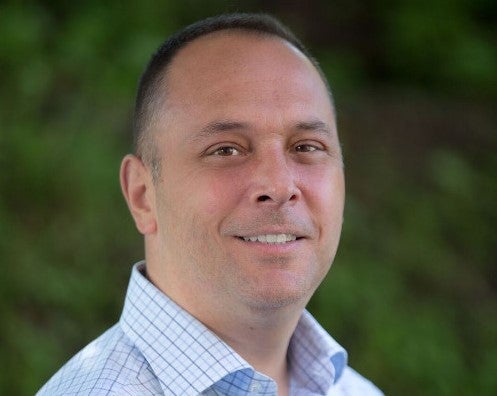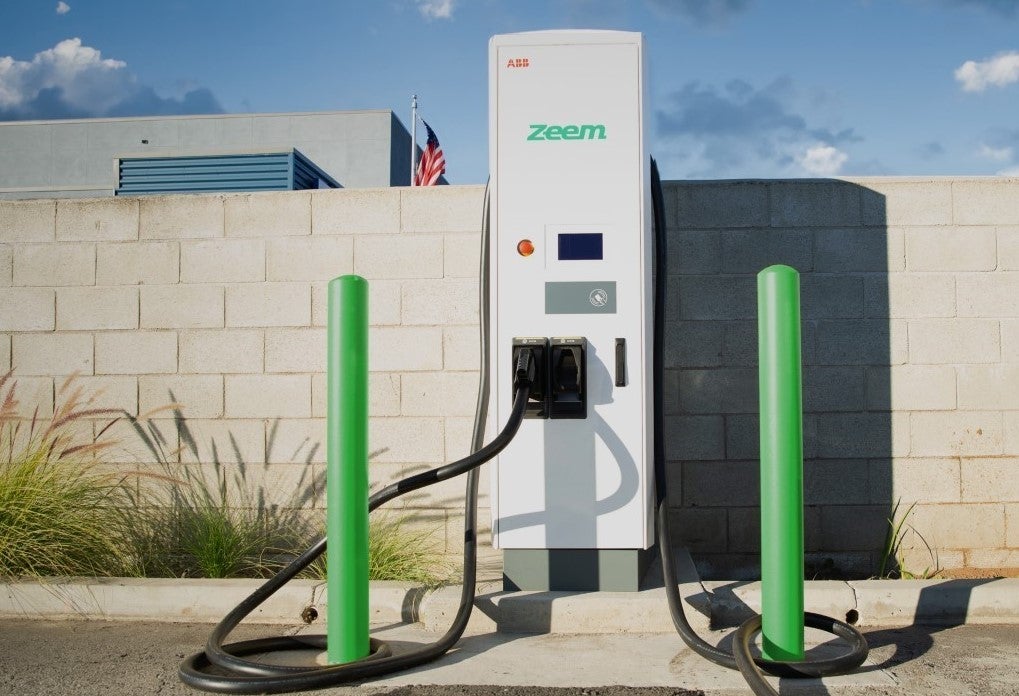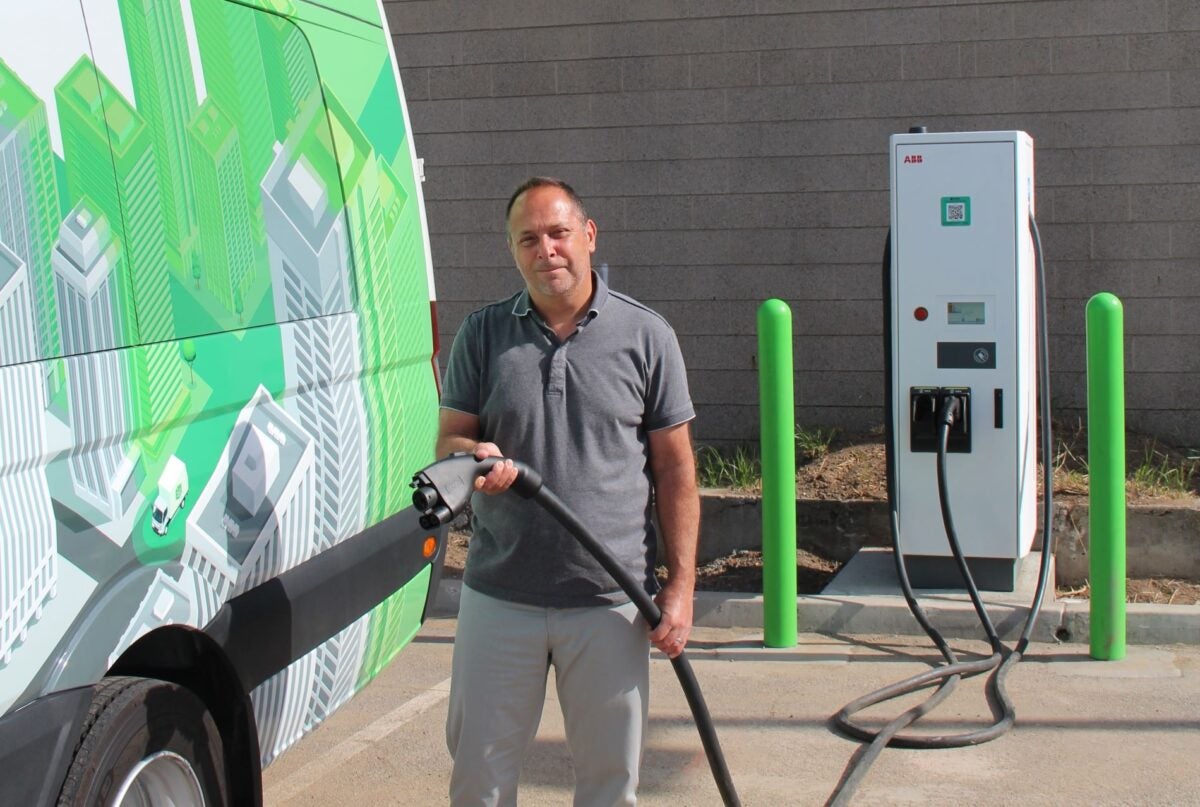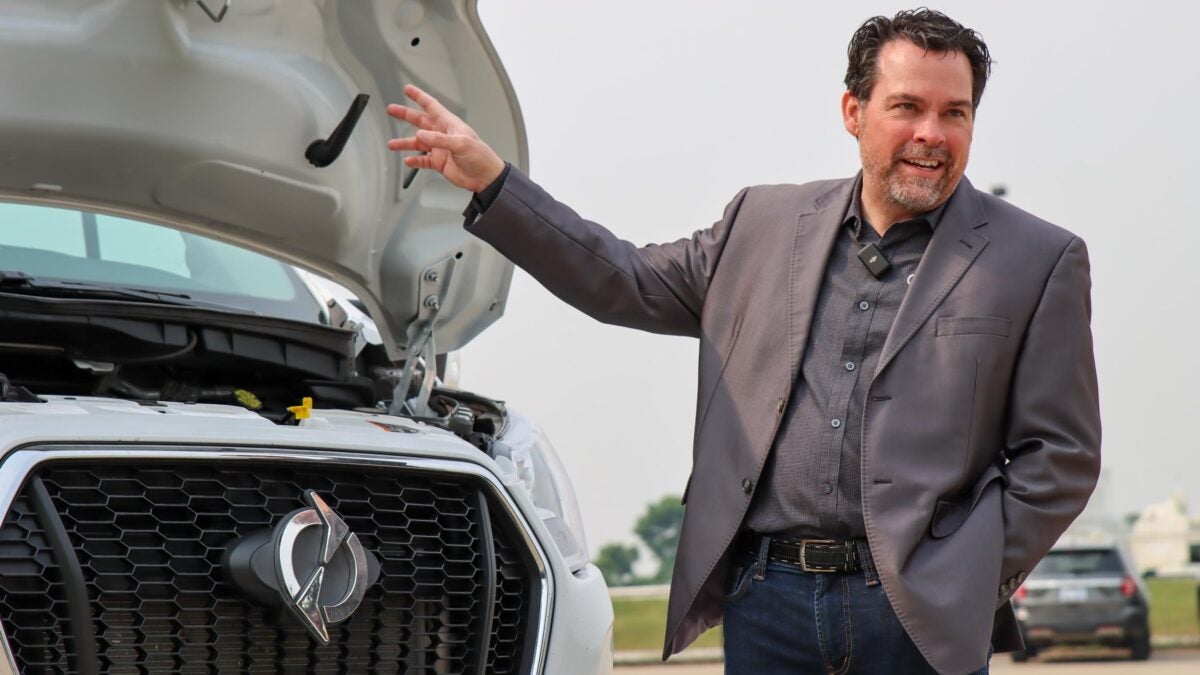Where will all the power come from to charge the electric trucks expected to someday dominate the industry? Zeem Solutions, an early leader in electric infrastructure development, sees decommissioned power plants that once distributed hundreds of megawatts as a target-rich environment.
Zeem CEO Paul Gioupis seems to do everything fast. He thinks fast. He talks fast. And his approach to providing electric vehicle charging — from passenger cars to Class 8 trucks — has caught on fast.
Gioupis founded Zeem — a name that combines the first two letters of zero and emissions — seven years ago. It was a jumping-off point from a career as an investment banker to United Kingdom-based Smith Electric Vehicles. He helped that company build its electric component stack for Class 4-6 vehicles.
Along the way to an unsuccessful public listing, he got a full education around electrification — vehicles, batteries, charging and interacting with utilities. Smith EV suspended all operations in 2017.
“Long story short, it all failed,” he told me in an interview this week.

Lessons learned
“From day one, we built these [Zeem] depots to be able to accommodate everything from light-duty, medium-duty and heavy-duty,” Gioupis said.
Los Angeles International Airport (LAX) was a strategic choice. Gioupis knew the airport faced a heavy lift to decarbonize transportation by 2027. Zeem owns and charges dozens of electric shuttle vans that ferry passengers and flight crews between the sprawling airport’s terminals to hotels and back to the terminals. Commercial EVs account for about 40% of its fleet-as-a-service business.
Hertz battery-electric passenger cars charge at two Zeem facilities near LAX covering 3.1 acres with a total capacity of 10 megawatts located less than a quarter-mile apart. Electric cargo vans from General Motors subsidiary BrightDrop and Ford’s electric Transit vans take up greater capacity as they grow in popularity.
Electrified 16- and 18-foot box trucks from Kuehne+Nagel and BMC, and Class 8 tractors from Volvo and Nikola servicing LAX — the nation’s 11th-largest port — drink from Zeem’s direct-charging (DC) ports. Anheuser-Busch also parks and charges electric trucks under a depot services agreement.
Zeem also offers a charge-and-go option; a parking, charging, maintenance and wash service; and a truck-as-a-service bundle that comes with a truck, charging and depot services for an all-in monthly price.
Charging options abound
Zeem’s charging options range from 53 alternating-current chargers — called Level 2 charging — to 78 DC fast chargers from ABB. Together they dispensed more than 1 million kilowatt-hours of electricity last year. Zeem’s 25,000 charging sessions to 7,700 vehicles at LAX equated to a gigawatt of electricity — enough to power 50,000 California homes on an average day.
The company expects to dispense 4GW of electricity this year. That means four times the pressure on the electric grid resulting in higher “demand charges” for fleets that charge at peak times. Zeem seeks to offset that impact through bi-direction charging — using its chargers to move electricity to a vehicle that needs charging from a charged truck sitting idle.
Eventually, Zeem will store energy on-site as an alternative to charging customers extra for peak charging. It has looked “down the rabbit hole” at available options from stationary fuel cells to generators — even diesel-powered ones — to build up energy at its locations.

Getting there wasn’t easy
Numerous barriers slow infrastructure development — from permitting to supply chain bottlenecks to communicating with utilities.
“When you’re trying to actually dig up the ground and put in the conduits that run the proper piping for the infrastructure, you start running into a lot of issues. It’s incredibly challenging from beginning to end,” Gioupis said.
Despite the challenges, he credits Southern California Edison as “the most forward-leaning” utility when it comes to understanding the difference between a construction company presenting site plans for a warehouse or a gas station from infrastructure developers who want to know how much power they can get and when they can get it.
In Washington state, Zeem waited four months to learn how much electric capacity it could get.
“You need to understand how to navigate the utility quickly and understand when you’re going to be able to get actual capacity. They’re not used to the request,” Gioupis said. “We build medium-duty and heavy-duty infrastructure for fleets. That category needs to be more clear to the utility because the power usage is massive.”

Future state: Decommissioned power plants
Boston-based ArcLight Capital Partners invested $50 million in Zeem in July to scale its site builds. The private equity firm also identifies brownfield sites like decommissioned power plants, such as a 20-acre site in Long Beach, California, where 252MW of power once flowed. Another is waiting in New Jersey.
“I had a huge laugh,” Gioupis said. “And I called the partner and I said,’You do understand, I just found exactly what we’ve been looking for. We can’t find power, [and] we just found it.’
“We’ve been working on how do you actually sort of crack this nut. We’ve done that. It was a lot of money, a lot of time. You’re gonna see these pretty quickly from us.”
Receivership spells the end for Lightning eMotors
The threat of insolvency seemed imminent for Lightning eMotors for most of the past two years. In December, the end finally came.The designer and manufacturer of electric shuttle vans and small school buses agreed on Dec. 15 to enter receivership, giving up on repaying its loans and financing. The agreement was filed with the Securities and Exchange Commission.
Cupola Infrastructure Income Fund filed a complaint Dec. 13 in Larimer County (Colorado) District Court asking a receiver be appointed over Lightning and its wholly owned subsidiary Lightning Systems Inc. The company agreed to the appointment of Cordes & Co. as the receiver.
Cordes is selling off Lightning’s assets to pay creditors, including $3 million to Cupola. Company shareholders are excluded from receiving any money. The New York Stock Exchange delisted Lightning on Tuesday because its shares had traded below the required $1 for more than 30 consecutive days.
Keeping a brave face
CEO and founder Tim Reeser kept a brave face during a June media ride and drive of company products in Detroit. But he acknowledged the company’s precarious financial position.
He expressed no regrets taking the company public via special purpose acquisition company GigCapital3 Inc., which valued the company at $586 million and raised $268 million that Lightning was promised at closing.
Because 29% of the shareholders in GigCapital3’s initial public offering redeemed shares early, Lightning received about $230 million.
“At the time, we needed a couple hundred million dollars to scale,” Reeser said in June. “We were in COVID. The markets were very difficult. The capital markets were willing to give us a great valuation. And we were able to get $230 million to scale. “We couldn’t have done it any other way.”
Separately, Lightning agreed Jan. 12 to settle a pending shareholder derivative action for $1.85 million plus $500,000 in plaintiff’s legal fees. A settlement hearing is scheduled for March 8 in federal court in Colorado.

Briefly noted …
IMC, the nation’s largest marine drayage company, has ordered 50 Nikola fuel-cell trucks for its operations in California, Arizona and Nevada.
Love’s Travel Stops and Daimler Truck North America have completed the rollout of Freightliner ExpressPoint at more than 400 Love’s Truck Care and Speedco locations.
Eaton Cummins Automated Transmission Technologies is offering the Endurant XD series automated transmission in International LT and HX models with the Cummins X15 engine.
Truck Tech bonus content: Peterbilt SuperTruck 2 walkaround
That’s it for this week. Click here to get Truck Tech via email on Fridays. And catch the latest in major events and hear from the top players on Truck Tech at 3 p.m. Wednesdays on the FreightWaves YouTube channel. Your feedback counts. Please write to [email protected] with suggestions and comments on Truck Tech.










